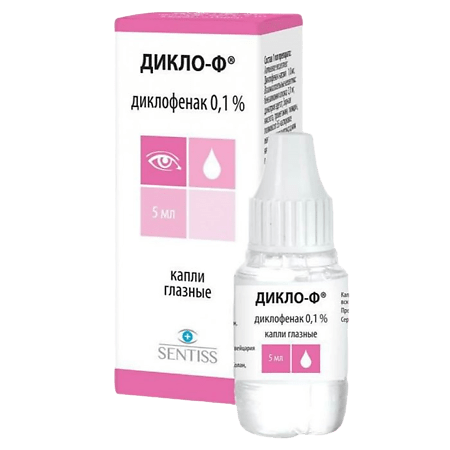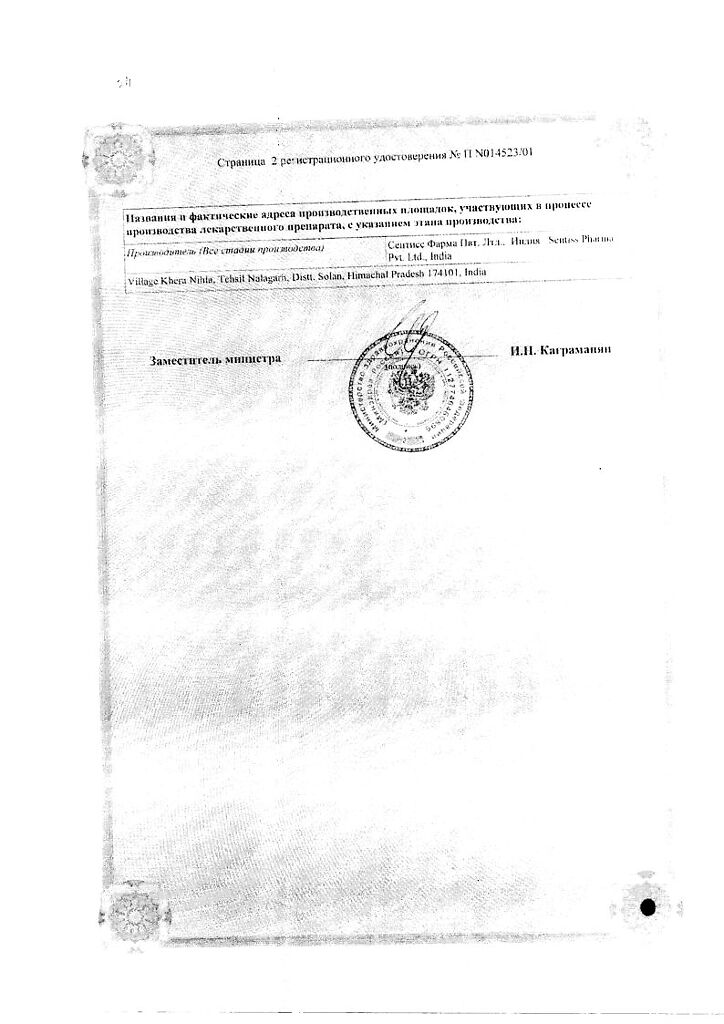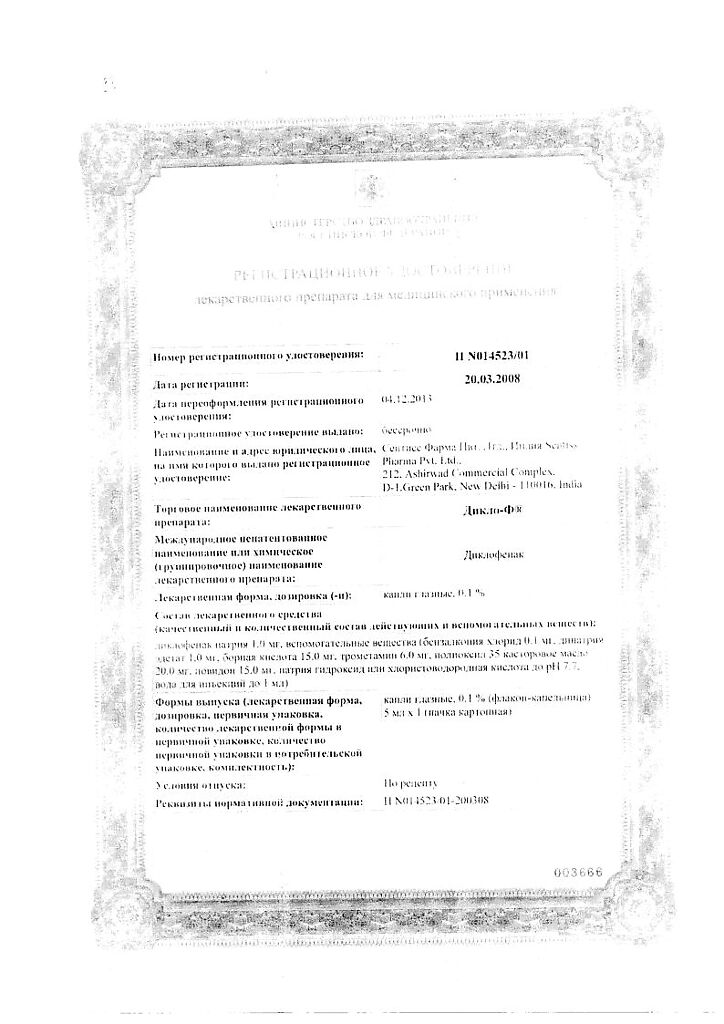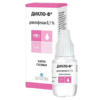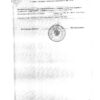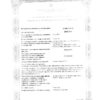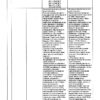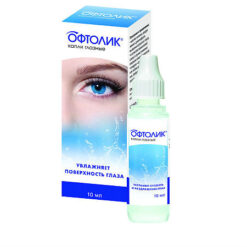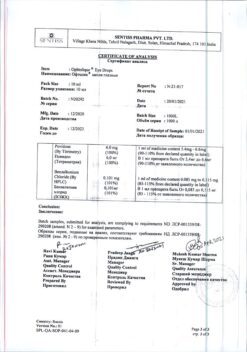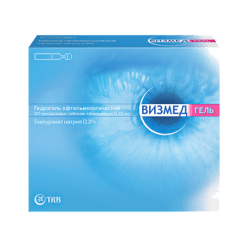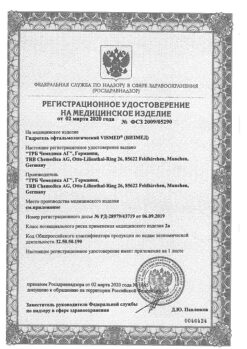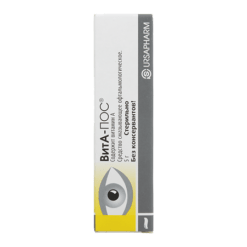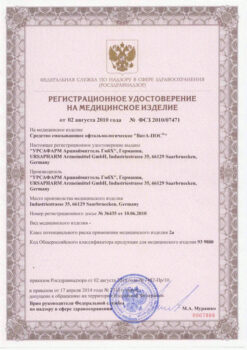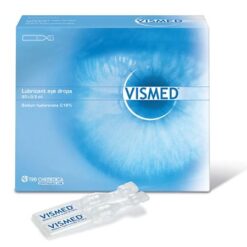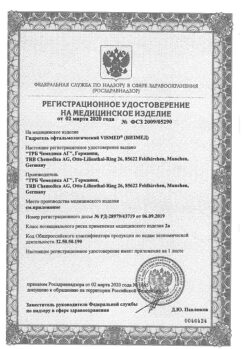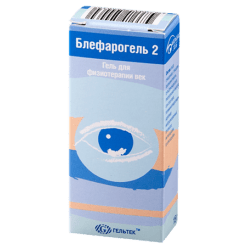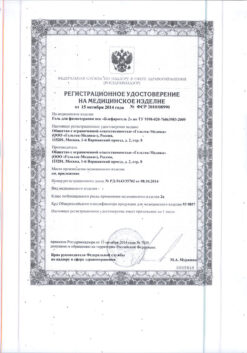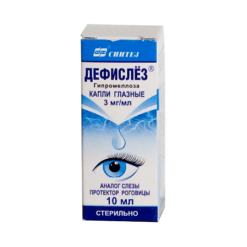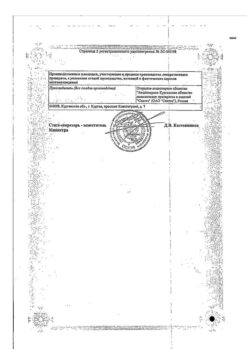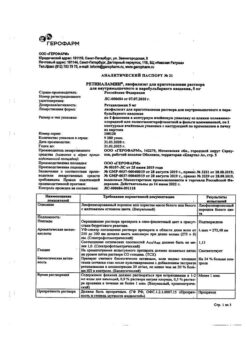No products in the cart.
Diklo-F, eye drops 0.1% 5 ml
€4.32 €3.84
Description
It has anti-inflammatory, analgesic and antipyretic effects. The mechanism of action is due to non-selective inhibition of COX-1 and -2 activity, which leads to suppression of GH synthesis in the inflammation focus.
Diclofenac reduces ocular inflammation that may occur as a result of infection, trauma or surgery; it reduces miosis during surgery and reduces PG synthesis and their content in the moisture of the anterior chamber.
Pharmacokinetics
Diclofenac is absorbed into the systemic bloodstream during instillation of eye drops. However, the concentration of the drug substance reached in the blood is well below the detection limit and has no clinical significance.
Indications
Indications
inhibition of miosis during cataract surgery;
treatment of non-infectious conjunctivitis;
treatment and prevention of inflammatory processes after surgical interventions on the eyeball;
prevention of cystoid macular edema after cataract surgery;
treatment and prevention of post-traumatic inflammatory process in penetrating and non-penetrating wounds of the eyeball (as an addition to local antibacterial therapy).
Pharmacological effect
Pharmacological effect
It has anti-inflammatory, analgesic and antipyretic effects. The mechanism of action is due to the indiscriminate inhibition of the activity of COX-1 and -2, which leads to the suppression of PG synthesis at the site of inflammation.
Diclofenac reduces eye inflammation that may occur as a result of infection, injury, or surgery; reduces miosis during surgical operations, reduces the synthesis of PGs and their content in the moisture of the anterior chamber.
Pharmacokinetics
When instilled with eye drops, diclofenac is absorbed into the systemic circulation. However, the drug concentration achieved in the blood is well below the detection limit and has no clinical significance.
Special instructions
Special instructions
Patients using contact lenses should use Diklo-F only with the lenses removed and put them back on 15 minutes after instillation of the drug.
The bottle must be closed after each use. Do not touch the tip of the pipette to your eye.
Impact on the ability to drive vehicles and operate machinery
During the treatment period, it is necessary to refrain from engaging in potentially hazardous activities that require increased concentration and speed of psychomotor reactions.
Active ingredient
Active ingredient
Diclofenac
Composition
Composition
Active substance:
diclofenac sodium – 1 ml
Excipients:
benzalkonium chloride – 0.1 mg;
disodium edetate – 1 mg;
boric acid – 15 mg;
tromethamine – 6 mg;
polyoxyl-35-castor oil – 20 mg;
povidone – 15 mg
sodium hydroxide or hydrochloric acid – up to pH 7.7;
water for injection – up to 1 ml.
Pregnancy
Pregnancy
There is no data on the use of the drug during pregnancy and lactation. When using NSAIDs in the third trimester of pregnancy, the risk of fetal circulatory disorders may increase. Use in pregnant and nursing mothers is possible only as prescribed by the attending physician, if the expected therapeutic effect exceeds the risk of developing possible side effects.
There is no reliable data on the use of the drug in children, so the drug should be used in this category of patients only if the expected benefit outweighs the potential risk.
Contraindications
Contraindications
hematopoietic disorder of unknown origin;
hypersensitivity to acetylsalicylic acid or other NSAIDs;
erosive and ulcerative processes in the gastrointestinal tract in the acute stage;
hypersensitivity to diclofenac or auxiliary components of the drug.
Use with caution in cases of epithelial herpetic keratitis (including a history), in diseases that cause blood clotting disorders (including hemophilia, prolongation of bleeding time, bleeding tendency), as well as in elderly patients.
Side Effects
Side Effects
In rare cases – burning of the eyes, blurred vision (immediately after instillation); clouding of the cornea (cataract), iritis.
Allergic reactions: itching in the eyes, hyperemia, angioedema of the face, fever, chills, photosensitivity, skin rash (mainly erythematous, urticaria), exudative erythema multiforme, nausea, vomiting.
Interaction
Interaction
The simultaneous use of this drug with diflunisal (since bleeding from the gastrointestinal tract may develop) and other NSAIDs, including acetylsalicylic acid in large doses (3 g or more per day), sulfonylureas, methotrexate is not recommended.
Use together with lithium preparations, digitoxin, and indirect anticoagulants leads to an increase in their effect.
If necessary, can be used simultaneously with other eye drops, incl. containing GCS. In this case, the break between applications should be at least 5 minutes to prevent leaching of the active substances with subsequent doses.
Storage conditions
Storage conditions
In a place protected from light, at a temperature not exceeding 30 °C (do not freeze)
Shelf life
Shelf life
2 years
Manufacturer
Manufacturer
Sentiss Pharma Pvt.Ltd, India
Additional information
| Shelf life | 2 years |
|---|---|
| Conditions of storage | In the dark place at a temperature not exceeding 30 °C (do not freeze) |
| Manufacturer | Sentiss Pharma Pvt.Ltd, India |
| Medication form | eye drops |
| Brand | Sentiss Pharma Pvt.Ltd |
Related products
Buy Diklo-F, eye drops 0.1% 5 ml with delivery to USA, UK, Europe and over 120 other countries.

